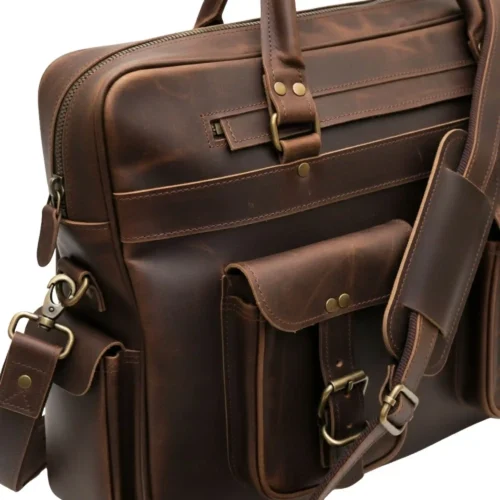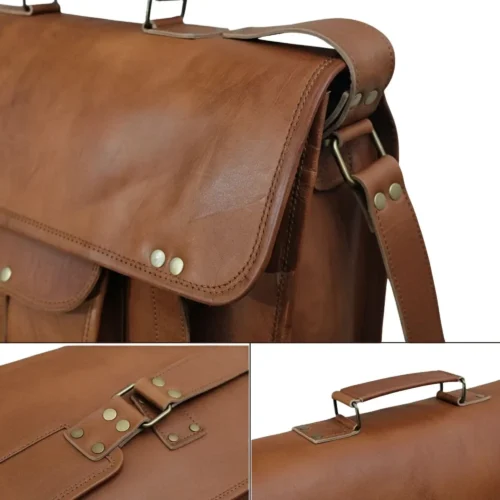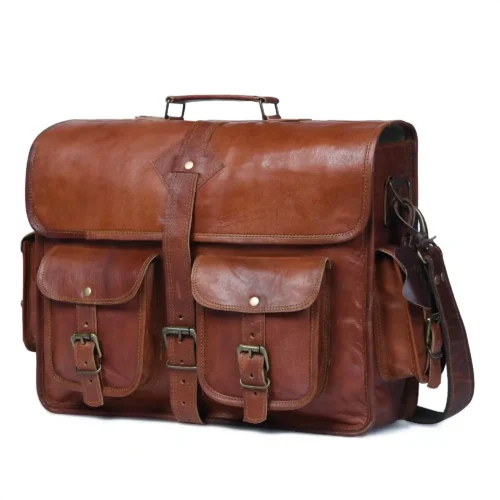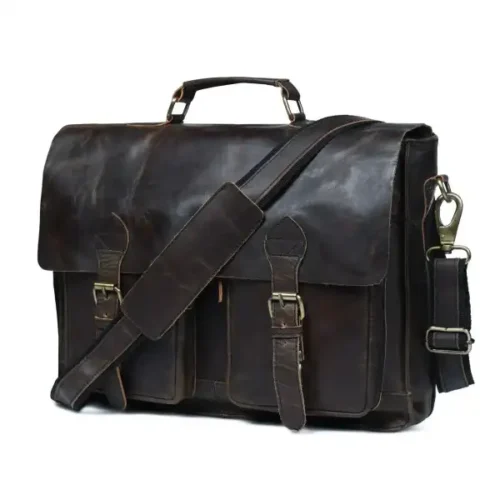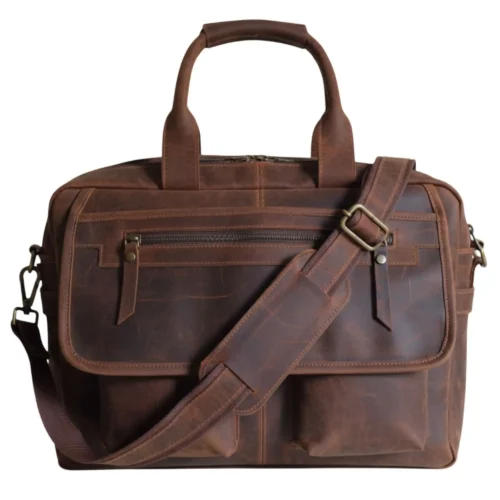
🚛 FREE SHIPPING | LIFETIME REPAIR WARRANTY | 20% Sale: “FREEDOM20”
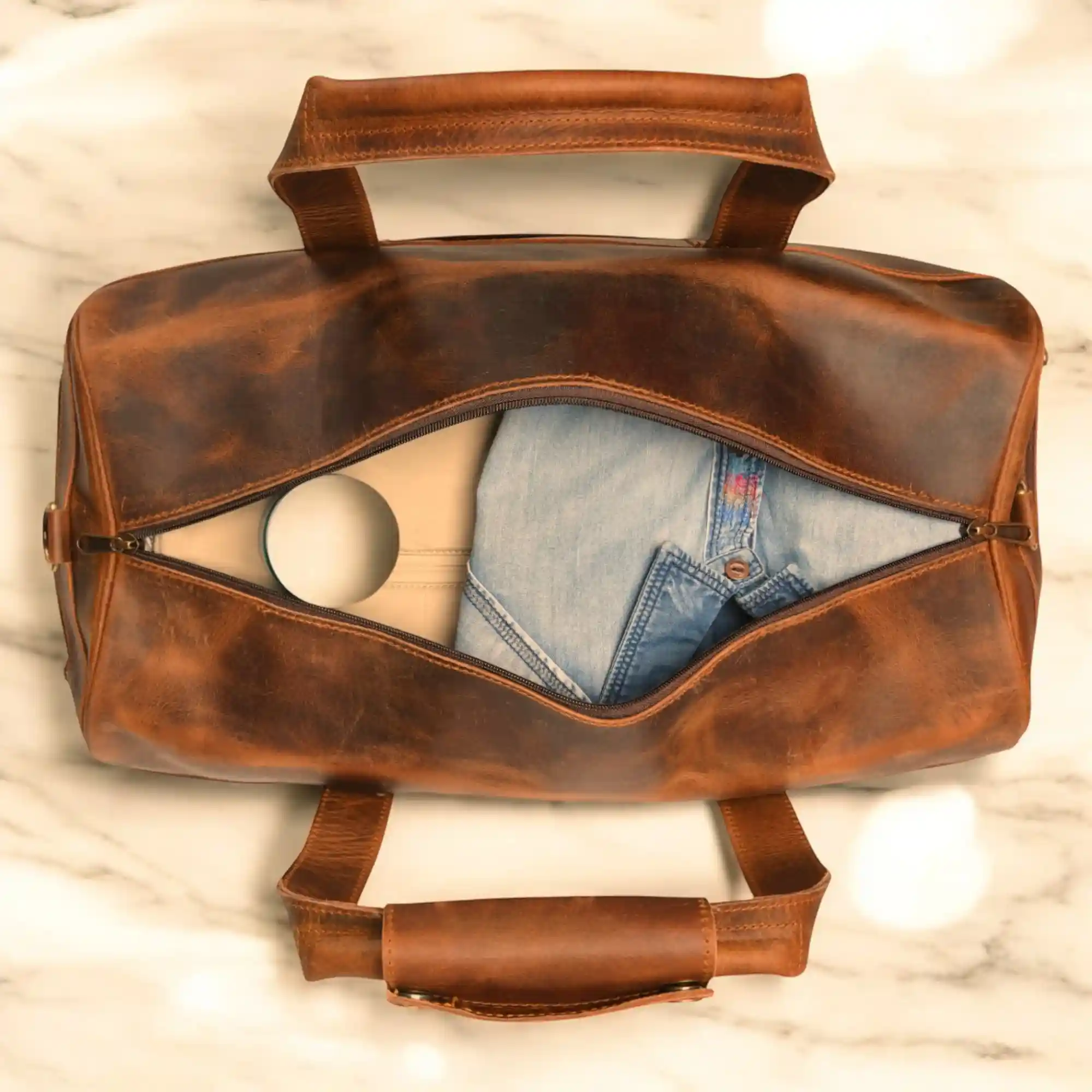
Leather duffle bags are timeless pieces that blend style, durability, and practicality. But with so many options in the market, it’s surprisingly easy to fall into the trap of purchasing a low-quality one disguised as “premium.” Whether you’re a frequent traveler or simply love the rugged elegance of leather, understanding how to check leather duffle bag quality can save you from disappointment and wasted money.
This guide will walk you through all the low-quality leather duffle bag signs, how to compare poor-quality leather vs genuine leather, and the most effective tips to spot fake leather bags before you hit the checkout button.
A leather duffle bag isn’t just for carrying belongings, it’s an investment in craftsmanship and aesthetics. High-quality leather ages beautifully, develops a unique patina over time, and can last decades with minimal maintenance. On the other hand, a poor-quality leather bag starts to show cracks, stains, and stiffness within a year.
When you invest in real leather, you’re buying longevity and personality. Every stitch, lining, and metal accent contributes to the bag’s lifespan and character.
Before identifying a bad leather travel bag, you need to understand the types of leather commonly used in duffle bags.
Knowing these grades helps you instantly recognize where a product stands on the quality scale.
If you’re unsure what separates a luxury duffle from a cheap imitation, look for the following warning signs before buying:
Run your hand over the surface. Real leather feels slightly grainy, warm, and flexible. Poor-quality leather feels too smooth, cold, or plasticky, a major red flag.
Authentic leather emits a rich, natural, earthy smell. Synthetic or bonded leather gives off a strong solvent or plastic odor. That’s one of the clearest low-quality leather duffle bag signs.
Genuine hides have natural blemishes, wrinkles, and slight imperfections. A surface that looks “too perfect” often indicates fake or corrected leather.
High-end duffle bags feature precise, tight stitches with even spacing. Loose, frayed, or inconsistent stitching is a sure sign of rushed craftsmanship.
Zippers, buckles, and clasps should feel solid and smooth. If they rattle or discolor easily, you’re looking at low-quality materials that won’t last.
Authentic leather duffle bags have smooth, clean edges. Cheap ones often show rough cuts or plastic sealant that peels over time.
Counterfeit makers often copy logos or poorly emboss brand names. Always cross-check the brand’s authenticity, packaging, and website legitimacy.
Knowing how to check leather duffle bag quality can help you avoid paying premium prices for poor craftsmanship. Here’s a step-by-step checklist:
Real leather has variable textures and pores. Try the water droplet test, genuine leather absorbs water slowly; fake leather just repels it.
Gently bend the surface. Real leather will flex naturally and form small creases, while fake leather either stays rigid or cracks.
A genuine leather duffle bag feels slightly heavier than synthetic ones due to the thickness and density of the material.
High-quality bags often use cotton or suede lining, while cheaper alternatives use polyester or nylon.
Solid brass or stainless steel fittings are preferred over lightweight alloys that rust or bend easily.
Reputable brands proudly mention their leather origin, for instance, “full-grain Italian leather” or “vegetable-tanned cowhide.” If the seller avoids discussing material details, treat it as a warning sign.
Some poor-quality bags look good initially but deteriorate quickly once used. Look for these bad leather travel bag warning signs especially if you’re shopping online:
A well-crafted leather duffle retains its form, texture, and functionality for years, not months.
The difference between poor-quality leather vs genuine leather becomes evident when you observe them side by side.
| Feature | Genuine Leather | Poor-Quality Leather |
| Texture | Natural grain, soft and flexible | Smooth or plastic-like |
| Smell | Rich and earthy | Sharp chemical or synthetic |
| Aging | Develops patina, improves with time | Cracks and flakes easily |
| Weight | Dense but balanced | Lightweight and hollow feel |
| Stitching | Even, thick thread | Inconsistent and loose |
| Price Range | Higher but worth the investment | Cheap upfront but short lifespan |
Authentic leather tells a story through its irregularities, while fake leather tries to hide imperfections.
Fake or “PU leather” bags often mimic the look of real ones but fail in quality and aging. Here are practical tips to spot fake leather bags:
A little diligence can shield you from counterfeit sellers and imitation products flooding online marketplaces.
When shopping for the perfect leather duffle bag, knowing what to check makes all the difference. Here’s a complete leather duffle bag buying guide for both men and women.
Choose based on your use case. A 40–45L capacity works well for weekend trips. For gym use, opt for a medium 30L size that’s easy to carry.
Full-grain leather is ideal for durability and aesthetics, while top-grain offers slightly lighter weight with polish. Avoid bonded or “genuine” leather labeled bags.
Vegetable-tanned leather ages gracefully and emits a natural scent. Chrome-tanned versions are cheaper but often thinner and less durable.
Look for multiple sections, especially a segregated shoe compartment, laptop sleeve, or inner zip pockets for organization.
Double-stitched seams, especially around handles and load-bearing areas, are hallmarks of quality.
A detachable shoulder strap and padded handles add comfort for longer journeys.
Brands with transparency about their craftsmanship and materials are generally safer investments. Always research reviews and warranty policies.
Good sellers provide clear care manuals- a strong sign they’re confident in the leather’s longevity.
While budget options may seem tempting, they’re rarely cost-efficient long-term. A low-quality leather duffle bag starts peeling or smelling unpleasant within months, forcing you to replace it. A high-quality one, though costlier initially, becomes a reliable travel companion and style statement for years.
Buying smartly means valuing craftsmanship over cost. When you buy from artisans or trusted brands, you’re supporting ethical production, sustainable materials, and superior durability.
Keep this concise pre-purchase checklist handy while evaluating a duffle bag, whether online or in-store:
If even one of these fails, reconsider your purchase.
Investing in quality is just the first step. Caring for it properly ensures your bag remains stunning for decades.
Proper care will preserve the richness, eliminate odor buildup, and keep surface cracks at bay.
Learning how to check leather duffle bag quality empowers you to buy smarter and travel better. A genuine leather duffle embodies character, endurance, and taste- everything a poor-quality alternative fails to deliver.
When in doubt, remember these essentials:

